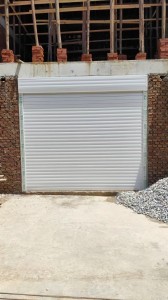Sliding doors are a great addition to any home, adding functionality and style and allowing plenty of natural light to fill your living space. If you own an Anderson sliding door, it’s important to know that the model is used for a variety of purposes, such as maintenance, repairs, or upgrading hardware. In this comprehensive guide, we’ll explore key aspects and steps to help you accurately identify your Andersen sliding door model.
1. Appearance visual inspection:
Start by inspecting the exterior of your Anderson sliding door to determine its essential features. Pay attention to panel configuration, glass type, and the presence of grilles or muntins. These details are often visible without removing the door and can provide useful identification information.
2. Hardware identification:
Next, inspect the hardware components on your sliding door, such as door handles, locking mechanisms, rollers, and track systems. Andersen sliding doors often have unique hardware designs specific to certain models. It is recommended to compare these features with Andersen’s official catalog or consult their customer service to accurately determine your door model.
3. Measurement dimensions:
Accurate measurements of your sliding door will also help identify the model. Measure the door’s height, width, and thickness. Also, record any other specific measurement details, such as door frame width. These measurements will help differentiate between standard-sized doors and custom-sized doors, further narrowing down the possibilities.
4. Check the door frame:
Gently remove the trim around the sliding door frame to expose any markings or labels. Andersen often labels its products with basic information such as model number, date of manufacture, and sometimes the series name. Be sure to record these details as they are vital in your quest for identification.
5. Online resources:
Anderson provides a wealth of information and resources on its official website to help customers accurately identify their sliding door model. Head to their website and use the search feature to find model-specific information, manuals, and even online support if you need it. Online forums and communities dedicated to home improvement can also be a valuable source of information, as homeowners often share their experiences and knowledge on these forums.
6. Seek professional help:
If you’ve completed all of the above steps and still can’t figure out which model of Anderson sliding door you have, it might be time to seek professional help. Contacting your local Andersen dealer or a professional contractor with experience using Andersen products can provide the expertise needed to accurately identify your model. They may be familiar with obscure details or have access to specialized resources that can solve the mystery.
Identifying your Anderson sliding door model is an important step in ensuring proper maintenance, repair, or upgrade options. By combining different methods, such as a visual inspection, checking the hardware, taking measurements, utilizing online resources, and seeking professional help, you can confidently determine your Andersen sliding door model. Armed with this knowledge, you will be better able to handle any future needs regarding sliding doors and make an informed decision that suits your preferences and requirements.
Post time: Nov-22-2023

